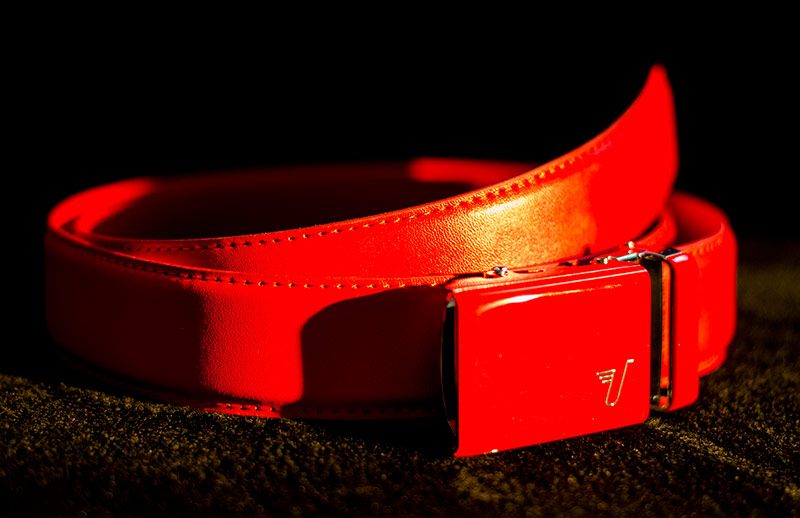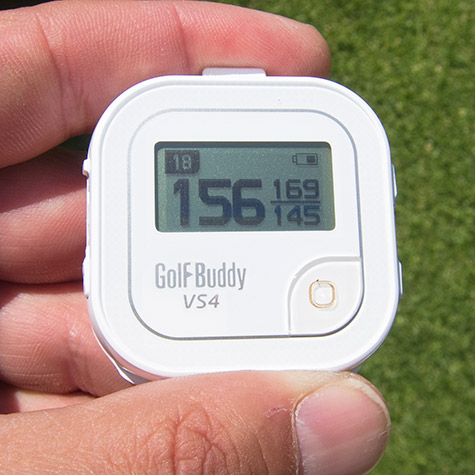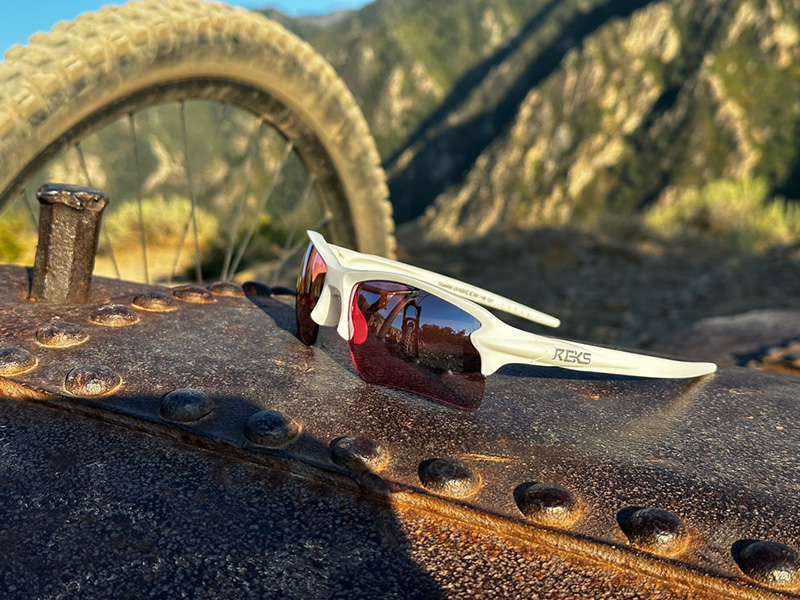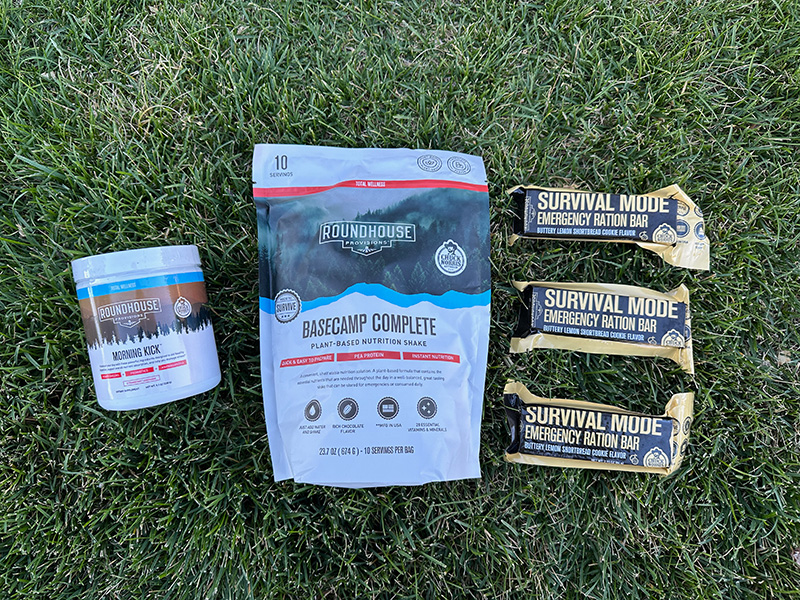Thankful the Golf Gods Smiled Upon Me
Many times I’ve used this golf blog to vent my frustrations with the game of golf. I do admit I’ve done my fair share of whining and snivelling about my scores and my short game. Golf is hard. Golf is frustrating. It is a game that cannot be mastered, yet I still do it and often wonder why.
Yesterday I apparently had some positive credit with the golf gods. I was the beneficiary of two crazy breaks, which both resulted in birdie.
First break was on the 7th hole at Bonneville here in Salt Lake. That hole parallels a busy street and the green sits next to a fence bordering the street. Any pulled shot left of the green could hit a car. I hit a wild drive into the right treeline. From 130 or so out, I punched a pitching wedge at the pin, but hit it way too hard. The ball bounced off the fence and settled to about two feet from the hole. I made the birdie putt.
The second break was on the very long par-3 15th. I hit a hybrid from 235 but hit a bit of an inside the club face thin shot which resulted in a low power fade. Not my intended shot. The ball rolled onto the green and settled about 15 inches from the cup, nearly going in. I made the birdie putt.
Finally the golf gods rewarded a good shot on the 18th hole. 18 at Bonneville is a 470 yard par-4 where the second shot is over a ravine (image below).
After a 300 yard drive I sat at 173. I hit a 100% pure 7-iron on the exact line I visualized before the shot. The flight was nice and high with a tiny draw. It hit short-right of the pin and followed the green’s contour right into the hole for EAGLE. I was +2 on the round going into the final hole so the eagle got me back to even par 72 on the day, a tie for my best score of the season.
It seems like the ball bounces negatively more in golf than it does positively. Yesterday though, it was all positive and for that I’m thankful. Next time I’m out I fix a few more ball marks and fill in a few more divots. Need to keep making deposits into the golf karma kitty.
Dunhill Links Championship Venues: The Old Course
Categories: European Tour • Golf • Golf Courses • Pro Golf
Tags: Alfred Dunhill Links Championship • Old Course • Scotland • St. Andrews
This post-Ryder Cup week and pre PGA Tour wrap-around (not reach around) week is one in which I have great interest. This is the week of the Alfred Dunhill Links Championship in Fife, Scotland. The event is contested on three of my favorite courses in the world, the Old Course in St. Andrews, Carnoustie Golf Links, and Kingsbarns. As I’ve played fair amount of golf on all three of these wonderful layouts, I’m doing a small post on each one with some photos so you can enjoy watching the event a little bit more.

My good friend and caddie John Boyne of CaddieGolfTours.com (left) and myself at the Home of Golf – No better walk in the world than with John on on the bag and my putter in my hand on the par-3 8th at the Old Course.
The first course I’m going to feature must be the Home of Golf, the Old Course. The Old Course is quite old, an estimated 1,400 years old in fact. The Old is located in the town of St. Andrews, yards from lodging, restaurants, pubs, and next to the North Sea.
Playing the Old Course is quite an experience, one I’m happy to have had four times now. The course is not long by today’s standards, and the hard ground makes it play even shorter. With no wind, modern tour pros will score some very low numbers on the Old. If the wind kicks up though, watch out.
Some of my favorite holes on the Old include #2, a par-4 with a blind tee shot. If one were playing that hole for the first time and without a caddie, that player would have no clue where to hit the tee shot. The green on #2 is amazing. There is a huge hump in front of the green and approach shots must go over that hump and down onto the putting surface. The right side of the green has a huge hump which literally looks like a Volkswagen Beetle was buried there.
The par-3 11th hole is a “bugger” as they say in Scotland. The best I’ve managed on that hole in four attempts is bogey. The tee shot is very difficult as winds are often shoving the ball hard left to right. The green slants back to front severely and bunkers guard the front, making chip shots tough.
My favorite hole at the Old is the Road Hole, the tough par-4 17th. This is the most famous single golf hole on the planet. The Road Hole is where I scored by far the greatest par I’ll ever have. I know I’ll NEVER top it in my lifetime. I went out of bounds on my tee shot, hitting the Old Course Hotel observatory. After re-teeing and ending up in the left rough, I holed out a hybrid from 196 yards for par.
The 17th is also the location of one of my worst single hole scores, when I could not get out of waist deep rough left of the fairway.

Pulling my amazing hole-out par ball from the hole on the 17th Road Hole. FORE!
The 18th at the Old is the hole I have the best record on. In four rounds I’m -2 lifetime. Two pars and two birdies. Many modern pros can drive the green on this short par-4. Upon further reflection, I’ve played this hole more than four times. There are a couple of “midnight” rounds on this hole where the only two clubs in the bag were a putter and a 5th of scotch. My best score on the 18th when using only a putter? Bogey. Brilliant.
Conclusion
Playing the Old Course is a unique experience in golf. There is NO course like it with its shared greens, holes which crisscross each other, and of course the amazing terrain. It is truly a special experience, and one which is best experienced with a local Old Course caddie on the bag.
More Old Course Photos
Click the following link to access my library of St. Andrews Old Course photos
Mission Belts Review
Categories: Golf Apparel • Golf Gear • Reviews
Tags: Mission Belt
Today’s apparel script includes a nice black belt, the “Alloy,” as well as the all-red “Ferrari” (pictured below) from Mission Belts, a company located only about a 30 minute drive south of HOG World Headquarters.
The Mission
Mission Belts is not a regular belt company and their name test a bit of the story. Their company has a mission, to fight global hunger and poverty by micro lending. One dollar of every belt sold goes toward that mission. Perhaps they will microlend to impoverished starving golf bloggers…
The Belts
Mission Belts employ my favorite kind of belt fitting system, one in which there are no holes in the leather and a ratchet mechanism controls the fit. These systems are great because one can much more finely adjust the belt’s fit. It is very nice to be able to loosen the ratchet a notch or two when sitting, or perhaps when lunch was a little too big.
Sizes
Sizing with ratchet style bets is great. The belt can be custom cut to a proper length and the ratchets tighten for a perfect, comfortable fit.
Sizes run from 28-56 inches.
Styles/Colors
There are many styles and colors to choose from with varying buckles to mix and match. Close to 50 different ones as far as I can calculate.
Collegiate Logos
Mission also offers collegiate logo belts in the respective school’s colors. Surely a Utah Utes version would warrant another (uber-glowing) review here on HOG.
Conclusion
Mission Belts are stylish, well made, and best of all can be perfectly fitted to the most comfortable and best size for each individual.
Retail pricing averages between $35-40 per belt with kids belts coming in around $26.
GolfBuddy VS4 Mini Talking Golf GPS Review
Categories: Golf • Golf Accessories • Golf Gear • Reviews
Tags: Golf Buddy • Golf GPS
My latest gamer in the golf GPS department has been the GolfBuddy VS4 Golf GPS. The VS4 is a tiny golf GPS, the size of a watch but without a watch band. Not only is this golf GPS tiny, it speaks your yardages to you. Suggested retail price on this unit is $179.99 but I’ve seen street pricing averaging at around $149.99.
GolfBuddy VS4 Feature List
- Speaks yardages as well as informing golfer that he’s on a certain hole/tee box (just don’t hit shot from one hole to next tee box!)
- Detachable back allows unit to be mounted to hat, belt
- Water Resistant
- Displays yardages to front/center/back of the green
- Green view
- Preloaded with 37,000+ global courses
- Automatic course & hole recognition
- Measures shot distances
- 10 hour battery life
- Standard micro-usb charging cable
On The Course
I’ve found the convenience of the VS4 to be stellar. The unit is so small and light that I usually carry it in my left pocket (right pocket is tees and divot tool). When I want a yardage I can push the talk button through my pocket and the lady’s voice tells me “180 yards to center of green.” I’ve also mounted the unit on my belt and can easily see the center yardages as well as front and back. But lately I’ve had a Game Golf digital tracking device on my belt and don’t want a second device there. Another convenient place I can mount the unit is on the brim of my hat, similar to another brand of talking GPS.
The yardages in this unit are solid and accurate. I use a golf laser rangefinder as well, and the yardages to green center are either exact, or within 2-3 yards. The advantage of the GPS over the laser is that I can get yardages from anywhere without having to have a straight line of sight. And lately with my driving accuracy issues, I need yardages from behind trees, houses, cars, buildings, airplanes, mountains.
The unit lasts close to two rounds, about 10 hours. I make sure to charge it before every round.
Speaking of charging… a big gripe I have with watch sized golf GPS units is that they all have proprietary charging cables. So if you forget your cable, you can’t charge it by using a standard cable. That especially sucks when you are on a golf vacation. The VS4 uses a standard micro-usb cable for charging. Very convenient and if one forgets the cable, a new one can be purchased nearly anywhere for super cheap, like less than $2.00.
Critiques
The only missing feature I can think of with this great golf GPS unit is changing voices. I’d die and go to heaven if they put in the “scottish caddie” voice. When you click the button a burly caddie speaks to you in indecipherable gibberish and at the end of the yardage says “f*&*ing hit it!”
Accessories
I’m not a watch wearer but for those who are, an optional watch band allows this unit to be worn on the wrist.
Conclusion
I have at least 10 golf GPS units in my garage thanks to running a popular blog. The VS4 is the unit I’ve chosen as my go-to gamer. This is the one in the bag. The size, convenience, and accuracy make the GolfBuddy VS4 my GPS of choice.
Related Links
WT3 Golf GPS Watch review
GolfBuddy World Platinum GPS review
Monsta Golf Ball Review
Categories: Golf Balls • Golf Equipment • Golf Gear • Reviews
Tags: Monsta Golf
I’ve always tried to support smaller golf companies and golf entrepreneurs, provided that I believe in their product and the way they operate their businesses. One such smaller company who is taking on the big players in the golf ball world is Monsta Golf. Monsta is one of several small and relatively unknown makers of premium golf balls whose product competes with the ProV1’s of the world, and even beats them. Let us take a look at the Monsta Golf ball.
Construction
The Monsta Golf ball is a premium “tour” quality ball which has similar performance and materials to the Titleist ProV1 and other high end golf balls. The ball is a 3-layer ball consisting of a urethane cover, mantle layer, and inner layer.
The 318 dimple urethane cover is soft and produces the performance and spin around the greens one expects in a high quality golf ball. Urethane is the same material found on the cover of most high performance golf balls like the ProV1, Bridgestone B330 series, and many others.
The middle layer, also known as the “mantle,” promotes high initial velocity and produces less spin off the tee. Less spin off the tee means more accuracy and distance. This layer must balance well with the urethane cover which is designed to produce spin on shorter shots.
The core is the innermost layer. This layer transfers the most compression energy from impact to rebound, resulting in the largest distance component of the ball.
On The Course
I’ve had the Monsta ball in play for many many rounds. The durability of the ball is very good, allowing me to log as many as 4-5 rounds with one ball, provided I don’t lose it. I do have one ball which I’ve used for a good 4-5 rounds, and it barely has any signs of wear.
I’ve found the distance with this ball to be as long or longer than any other ball I’ve played. Recently I’ve picked up some clubhead speed and thus more yardage, and the Monsta definitely shines in the distance department.
Off the driver I notice an interesting flight characteristics with this 318 dimple ball. I may have a shot look as if it is going to just miss the fairway on one side, but it seems to “correct” in the air and straighten out. I can create different launches by changing the tee height as well. For instance, I can get the ball to climb late in the flight by teeing it lower, or I can get a high initial launch and a flatter flight toward the end by teeing the ball higher.
The spin characteristics of this ball are fantastic. Even on very hard greens the ball stops quickly on short to mid irons. In the full wedge game it is not uncommon to put some Phil “Mickelspin” on the ball and watch it back up. The key is to fly it far enough so the ball lands past the pin and spins back. Another term my pals use for this is “tour sauce.”
The first full round I played the Monsta was a few weeks ago. It was a crazy round in which I carded TWO eagles and four birdies, but also had some “others” which led to a 74. The next round was a solid 72 (even), followed by rounds of 73, 74, 73. There’s no doubt this ball works well for my game.
Pricing
Monsta’s pricing is at $34.99 per dozen. That’s a great deal for a ball with such great performance and durability characteristics. At about $15 cheaper than a box of ProV1’s, it is a no-brainer in my book. But for the average golfer who has not heard of Monsta, the $34.99 price point I think is still too high. I think they’d fly off the shelves at under $30. $24.99 would be even better. My guess is though that their hard costs will not warrant that low of a price point. After all, there are only a few plants in the world which make golf balls, owned by the bigs like Titleist, Bridgestone, Callaway etc. Monsta’s are likely made in one of those plants.
Critiques
The only critique I have is very minor. I’d like to see this ball come in a seamless version. The seam is quite visible. At the least I’d like to line up the ball’s decoration with the seam as I like to putt seamed golf balls with the seam lined up on the target line.
Conclusion
If you normally are willing to spend $40-60 on a dozen “tour” quality golf balls, pick up some Monsta Golf balls for $34.99 and you’ll have an extra $15 in your pocket you can spend on some frosty beverages at the 19th hole. Your score will not know the difference, but your buddies will.
« Previous 1 … 16 17 18 19 20 … 74 Next »














